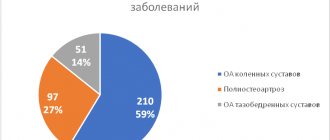Ilaris (Canakinumab)
Marketing authorization holder: NOVARTIS PHARMA, AG (Switzerland)
Manufactured by: NOVARTIS PHARMA STEIN, AG (Switzerland)
ATX code: L04AC08 (Canakinumab)
Active substance: canakinumab (canakinumab) Rec.INN registered by WHO
Release form, packaging and composition of the drug Ilaris®
Lyophilisate for preparing a solution for subcutaneous administration in the form of a white powder; reconstituted solution: slightly opalescent, slightly yellow to slightly brown or brownish-yellow.
| 1 fl. | |
| canakinumab | 150 mg |
Excipients: sucrose, L-histidine, L-histidine hydrochloride monohydrate, polysorbate 80.
Colorless glass bottles with a capacity of 6 ml (1) – cardboard packs×.
× the pack can be sealed with a transparent sticker.
Clinical and pharmacological group: Immunosuppressive drug. Monoclonal antibodies to interleukin-1 beta
Pharmacotherapeutic group: Immunosuppressive agent – monoclonal antibodies to interleukin-1 beta
pharmachologic effect
Immunosuppressant, monoclonal antibodies to interleukin-1β.
Canakinumab is a fully human IgG1/kappa isotype monoclonal antibody to interleukin-1β (IL-1β). Canakinumab binds with high affinity to human IL-1β, thereby preventing the interaction of IL-1β with its receptors, IL-1β-induced gene activation and the production of inflammatory mediators such as IL-6 and COX-2.
In patients with gouty arthritis and various phenotypes of cryopyrin-associated periodic syndrome (CAPS), including familial cold autoinflammatory syndrome/familial cold urticaria (Family Cold Autoinflammatory Syndrome/Familial Cold Urticaria, FCAS/FCU), Mackle syndrome Wales (Muckle-Wells Syndrome, MWS) and multisystemic infantile inflammatory disease/chronic infantile neurological cutaneous and articular syndrome (Neonatal onset multisystemic inflammatory disease/Chronic infantile neurological cutaneous and articular, NOMID/CINCA), canakinumab reduces the severity of local and systemic inflammatory reactions, caused by excess production of IL-1β. When used in patients with an acute attack of gouty arthritis, the concentration of laboratory markers of inflammation (C-reactive protein (CRP), serum amyloid A (SAA)) decreases, and signs of inflammation of the affected joint (pain, swelling, redness) disappear within a short time.
When using canakinumab in patients with various CAPS phenotypes, there is a decrease within the first day of the following manifestations of the disease: fever, fatigue, skin rash, arthralgia, myalgia, headache/migraine, conjunctivitis, weakness, as well as a decrease (within several days) production of inflammatory markers, including both CRP and CAA, and leads to normalization of the number of leukocytes and platelets (if they are increased).
Pharmacokinetics
In adult patients with various CAPS phenotypes, after a single subcutaneous administration of canakinumab at a dose of 150 mg, the Tmax of canakinumab is approximately 7 days. With subcutaneous administration of canakinumab, the absolute bioavailability is 63% (population pharmacokinetic analysis).
Cmax in blood plasma and AUC increase proportionally to the dose in the dose range from 0.30 to 10.0 mg/kg with intravenous infusion or with subcutaneous administration at a dose of 150 mg to 300 mg.
There was no significant difference in the pharmacokinetic properties of canakinumab in patients with gouty arthritis and different CAPS phenotypes.
The Vss of canakinumab varies with body weight. For a typical gouty arthritis patient weighing 93 kg, Vss is 7.92 L. For patients with different phenotypes, CAPS Vss is 6.01 L in a typical patient weighing 70 kg.
With subcutaneous administration of the drug for 6 months (dose of 150 mg) every 8 weeks, the accumulation coefficient of canakinumab is 1.3, every 12 weeks – 1.1.
The average final T1/2 is 26 days. The clearance of canakinumab varies depending on body weight. For a typical patient with gouty arthritis weighing 93 kg, the clearance is 0.23 l/day. For patients with different CAPS phenotypes, the clearance is 0.17 L/day in a typical patient weighing 70 kg.
Indications of the active substances of the drug Ilaris®
Acute gouty arthritis: treatment of acute attacks of gouty arthritis and prevention of the development of new attacks in the event of ineffectiveness, intolerance or contraindications to the use of NSAIDs and/or colchicine and when it is impossible to carry out therapy with repeated courses of GCS.
Cryopyrin-associated periodic syndrome (CAPS) in adults and children aged 4 years and older weighing >15 kg, including: familial cold autoinflammatory syndrome (FCAS)/familial cold urticaria (FCU); Muckle-Wales syndrome (MWS); infantile multisystem inflammatory disease (NOMID)/chronic infantile neurological cutaneous articular syndrome (CINCA).
Order a product
